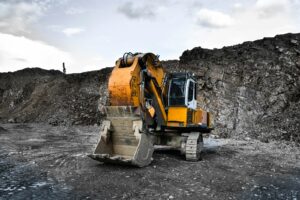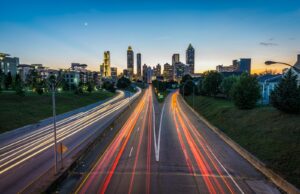After Grenfell: tenant empowerment and the end of cities as markets
The Grenfell Tower tragedy raises huge questions about public sector austerity, growing inequality and the price we pay for treating homes as commodities. Here five commentators give their views on the way forward for housing, community relations and cities:
 John P. Houghton: ‘We come back, as we always do, to the question of power.’
John P. Houghton: ‘We come back, as we always do, to the question of power.’
Until last week, ‘Ronan Point’ was the most infamous high-rise disaster in Britain. Three people were killed in 1968 when a faulty gas fitting in the hastily-constructed east London tower block caught fire, triggering the collapse of a quarter of the building.
Occurring at the peak of Britain’s post-war building boom, when parties competed for who could build most council houses, the incident at Ronan Point galvanised public suspicion of high-rise living and led to major overhauls of construction regulations and working practices.
Grenfell Tower was built in the immediate aftermath of Ronan Point. Its lead architect claimed that the lessons learned from the collapse and applied to Grenfell meant it could stand for ‘another hundred years’.
That may still be true. The flaw in Ronan Point was structural, a result of hasty design and sloppy construction. The flaw in Grenfell was, apparently, cosmetic. It was the inappropriate – and possibly illegal – application of a cheaper form of cladding that seems to have funnelled the flames up the exterior of the building, to such devastating effect.
‘We need more radical ways of empowering tenants in the face
of bureaucratic complacency and predatory development‘
Much has changed in the half decade between Ronan and Grenfell. We build a fraction of the houses we managed back then. Social housing has gone from a respectable step-up to social ladder to a residualised ambulance service for the very neediest. London is a booming global city, not the depopulating husk it remained for long decades after 1945.
What has not changed over the years is the wilful ignorance of tenants’ voices and the dismissal of their concerns. We come back, as we always do, to the question of power.
People living in the block had warned repeatedly and in ever more urgent tones that mismanagement and poor maintenance had created dangerous living conditions.
They were ignored, by an organisation that is supposed to embody the opposite of distant, high-handed landlordism. Kensington & Chelsea Tenant Management Organisation is the largest TMO in the country. Perhaps its size led to complacency and a tendency to behave more like an administrator of people and property than a channel for asserting tenants’ rights and serving their needs.
In response to the brutality of post-war clearance and the folly of so many construction programmes creating unpopular and unsound new builds like Ronan Point, there was a resurgence of new and old forms of tenant control: community land trusts, settlements, Housing Action Trusts, and tenant management organisations (let’s not overlook the excellent work of so many others across the country).
They were founded to take control away from town hall planning departments and give the power back to tenants.
In the wake of Grenfell, as after Ronan Point, legislation will be reviewed; industrial practices amended; inquests held; and individuals held to account. All these things should and must happen.
But we must come back to the question of power, and find new and more radical ways of empowering tenants in the face of bureaucratic complacency and predatory development.
- John P. Houghton is a freelance public policy consultant and blogger
 Mubin Haq: ‘A tragedy on the scale of Hillsborough and Aberfan’
Mubin Haq: ‘A tragedy on the scale of Hillsborough and Aberfan’
Grenfell Tower is a tragedy on the scale of Hillsborough and Aberfan and my only hope is that some good will come from it. The sad reality is that it sometimes takes large numbers of people dying for social change to happen. It has created a sense of urgency and galvanized people into action especially in relation to issues of health and safety and providing immediate support to those affected.
A significant issue in Kensington is that it is a very polarised borough with large concentrations of wealth and poverty. We need a rethink of where poorer families are housed and the mix we have in the capital. A few days ago we published new data, showing Kensington and Chelsea placed 74% of those in need of temporary accommodation outside of the borough, compared to a London average of 37%. It is good to see that 68 flats within the borough have been acquired for survivors of the Grenfell tragedy and this is a step in the right direction.
While we have more social housing in London than the England average, it is not enough to meet demand. There are a quarter of a million people on council waiting lists in London. Genuinely affordable housing is hard to come by. Part of the solution is supply. But between 2011/12 and 2013/14 Kensington and Chelsea only added 166 affordable homes to its housing stock. That was one of the lowest amongst London’s boroughs.
‘We need to move away from policies that increase
polarisation and towards making this a city for everyone‘
Grenfell is creating renewed debate about the role of social housing and investment. Some think tanks and politicians believe that the answer is to sell off expensive social housing and move people out. This could increase supply by creating homes in more affordable areas. But in areas like Kensington it would mean only the very wealthy could afford to live there. Is this a price worth paying? Personally, I don’t think it is. We need to move away from those policies and towards making this a city for everyone. Far too many areas have been neglected, there has been a lack of investment over years and we could end up creating places with little social mix.
If you’re very poor in a borough such as Kensington & Chelsea you might get social housing and if you’re very rich you’ll be able to buy but anyone in the middle has very little chance of living there. Across Inner London we are heading down a path of increased polarisation.
How can we create mixed communities where people of different backgrounds live next to each other? We need to think about design and the spaces that bring people together in a natural way. Community cohesion needs to come from the bottom up, but government and public agencies can help that by looking at the places where people come together – schools, health services, children centres and green spaces are really important.
On one level Grenfell and the terrorist incidents have shown how cohesive Britain is – the fact that people rallied together and showed solidarity. There are deep problems in this country but there is also a huge amount of resilience, of people coming together and that has been natural not forced.
- Mubin Haq is director of policy and grants at Trust for London
 Neil McInroy: ‘If any good can come out of this horror, it will be a rejection of the idea that cities are a market’
Neil McInroy: ‘If any good can come out of this horror, it will be a rejection of the idea that cities are a market’
The horror of Grenfell is linked to deepening and widening inequality and injustice in our cities. The chasm in housing choice and wealth – while particularly brutal in Kensington and Chelsea – is replicated across the country.
In many communities, the voice of local citizens is too often drowned out, by the loud and powerful noise of non-local capital return, investment and profit. Any social housing that remains in this market of speculation and appreciation, is disrespected. It is an irrelevance to the loud conversation that surrounds it.
In the case if Grenfell Tower it is becoming evident that corners were cut, dubious decisions were made and the voices of the people were ignored. The lived experience of life in the tower, where residents consistently highlighted the problems and risk – played second fiddle to an orchestra of relaxed attitudes toward, regulation, standards and red tape. If any good can come out of this horror, it will be a rejection of the idea that cities are a market and a beacon of economic growth and wealth accumulation.
Instead we need a restoration of the idea that we all should have equal rights in the city and that they are first and foremost a place of communities, homes, citizens and people.
- Neil McInroy is chief executive of the Centre for Local Economic Strategies
Harriet Vickers: ‘We need housing for people not profit’
We’re pleased that the Corporation of London has stepped in to offer social housing to Grenfell residents – the very least that should happen is that existing social tenants are offered alternative social housing after their homes have been burnt to the ground following council and government negligence.
It’s unclear whether these flats will be available to private renters, homeowners or subtenants of Grenfell Tower. We call on public authorities to rehouse all those made homeless by the Grenfell catastrophe, whatever their status.
The Kensington Row development had an existing affordable housing quota. In many of these developments, such as at 1 Commercial Street, residents of the ‘affordable’ housing units are kept separate from wealthier neighbours by being made to use separate entrances and only having access to limited building services.
We abhor the way in which developers of luxury blocks meet ‘affordable’ housing quotas by designing buildings in which those on low-incomes are kept out of sight from the rich.
The key issue is that there are almost 2 million people on council housing waiting lists across the UK – including thousands in Kensington & Chelsea alone. Long term we need public investment in council housing, which will save public money over the long run. Currently, the government spends £23bn every year on housing benefit which goes directly into landlord’s pockets.
We need housing for people not for profit – and public investment in secure, decent, genuinely affordable housing for everyone.
- Harriet Vickers is a spokesperson for the Radical Housing Network
 Matthew Warburton: ‘Tenants felt they were not listened to by their landlord’
Matthew Warburton: ‘Tenants felt they were not listened to by their landlord’
There are a long list of issues which need to be urgently and thoroughly looked at following this tragedy. There’s the worrying issue that tenants felt they were not being listened to by their landlord. That’s something no other local authority would want to be accused of doing.
There are also some really worrying issues that have been flagged up around the management of major works contracts, and where the responsibility lies for ensuring that safe materials are used safely.
Rehousing people affected by Grenfell will be one of the toughest issues that Kensingston and Chelsea will have to tackle. As we identify more blocks where the only safe option is to decant, that will be tough to manage without quite a lot of cooperation between local authorities and housing associations.
The government and local authorities are standing ready to do what needs to be done and I don’t think there will be any foot dragging once we are clearer on what needs to be done.
- Matthew Warburton is policy advisor at the Association of Retained Council Housing (ARCH)
Photo by scotbot 
Photo by scotbot 
Photo by scotbot 
















